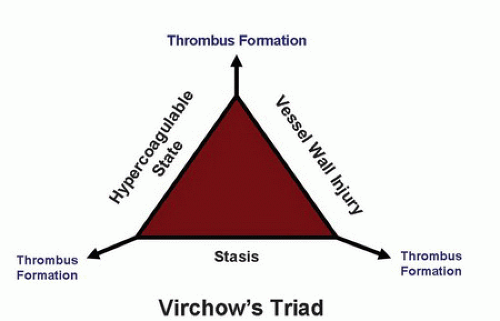In most vascular laboratories, the upper extremity venous duplex examination is performed less frequently than is the lower extremity venous examination. Whereas the basic principles of duplex scanning of the lower extremity venous system also apply to the upper extremity venous system, there are important differences between lower and upper extremity veins with respect to physiology, anatomy, and pathophysiology. An understanding of these differences is a prerequisite for the performance of a proper upper extremity venous duplex evaluation.
There are two major physiologic differences between upper and lower extremity venous flow. First, there is a marked difference in the phasicity of flow related to the respiratory cycle: In the lower extremity veins, flow decreases during inspiration and increases during expiration, whereas in the upper extremity, venous flow has the opposite relationship with respiration. This difference is caused by the interposition of the abdomen between the thorax and the lower extremities. During inspiration, intrathoracic pressure drops, causing an increase in the upper extremity venous pressure gradient and a consequent increase in venous flow from the upper extremities into the chest. However, inspiration is accompanied by descent of the diaphragm with a resulting increase in intra-abdominal pressure. Because veins are collapsible tubes, this increase in intraabdominal pressure impedes venous outflow from the legs.
A second important physiologic difference between lower and upper extremity venous flow is an often pronounced increase in pulsatility in the upper extremity venous flow pattern, particularly in the more central, axillosubclavian venous segment. This is due to the proximity of the upper extremity veins to the heart. The abdominal venous segments serve as a buffer that dampens out the central venous pressure changes and makes them less detectable in the femoral veins. This increased pulsatility in the upper extremity veins can be particularly marked in patients with elevated right heart pressures due to heart failure, pulmonary hypertension, and tricuspid stenosis or regurgitation. Conversely, pulsatility in these veins may be blunted by the presence of more central venous occlusion.
An important anatomic difference between the upper and lower extremity veins is that a significant portion of the axillosubclavian venous segment lies within the bony thorax or within the thoracic outlet, which can render these veins difficult to image and difficult to compress with the ultrasound probe. As is discussed later in this chapter, these difficulties can often be overcome with the use of small ultrasound probes and color-flow and Doppler spectral waveforms.
A key difference in the pathophysiology of the upper and lower extremity veins is the mechanism by which pathologic conditions in these veins lead to disease states. Deep vein thrombosis (DVT) of the lower extremity is more likely to be associated with clinically significant pulmonary embolism (PE) and limb-threatening venous hypertension (phlegmasia cerulea dolens, venous gangrene) than is upper extremity DVT. Whereas thrombosis of the femoral, popliteal, and calf veins is common and frequently leads to severe symptoms in the lower extremity, analogous thrombosis of the brachial and deep forearm veins (in the absence of axillosubclavian thrombosis) is relatively uncommon and is less often associated with severe clinical symptoms.
Because of their dependent position and longer length, flow in the lower extremity veins is more affected by gravity than is flow in the upper extremity veins. Consequently, venous function in the legs relies more upon the presence of intact and competent venous valves. Although obstruction and incompetence both play important roles in the development of symptoms related to the lower extremity veins, the chronic and often debilitating symptoms of stasis dermatitis and ulceration are more frequently caused by reflux due to venous valvular incompetence. In contrast, these postthrombotic sequelae are less frequently seen in the upper extremity where obstruction (and particularly central venous obstruction) is the predominant pathophysiologic feature.
This chapter describes the technique for performing an upper extremity venous duplex examination for venous thrombosis. In order to provide a clinical context for this application of duplex scanning, the presentation, diagnosis, and treatment of upper extremity venous thrombosis is covered first. This discussion focuses mainly on axillosubclavian venous thrombosis, but jugular, brachial, and forearm DVT, as well as superficial thrombophlebitis of the cephalic and basilic veins, are also mentioned. The related topic of duplex
scanning in the evaluation of dialysis access procedures is covered in
Chapter 33. Preoperative vein mapping is discussed in
Chapter 28.




